Lamborghini Aventador replacement's 1,001bhp V12 hybrid system revealed
V12s live on at Lambo
Lamborghini celebrates 60 years of making cars this year and what better way to mark the occasion than releasing the first in a new generation of hypercars?
The replacement for the Aventador, categorised as a “HPEV (High Performance Electrified Vehicle) hybrid super sports car” and codenamed “LB744”, will soon be unveiled in full, but in the meantime Lamborghini has whet the appetites of supercar buyers by detailing the new car’s extravagant plug-in hybrid powertrain, a 1,001bhp masterpiece combining the might of a new V12 engine with three electric motors.
The new 6.5-litre V12 is a naturally aspirated unit, producing up to 813bhp on its own at a stratospheric 9,250rpm, making it the most powerful Lamborghini 12-cylinder engine yet. It’s also the lightest, weighing 17kg less than the V12 in the middle of the outgoing Aventador.
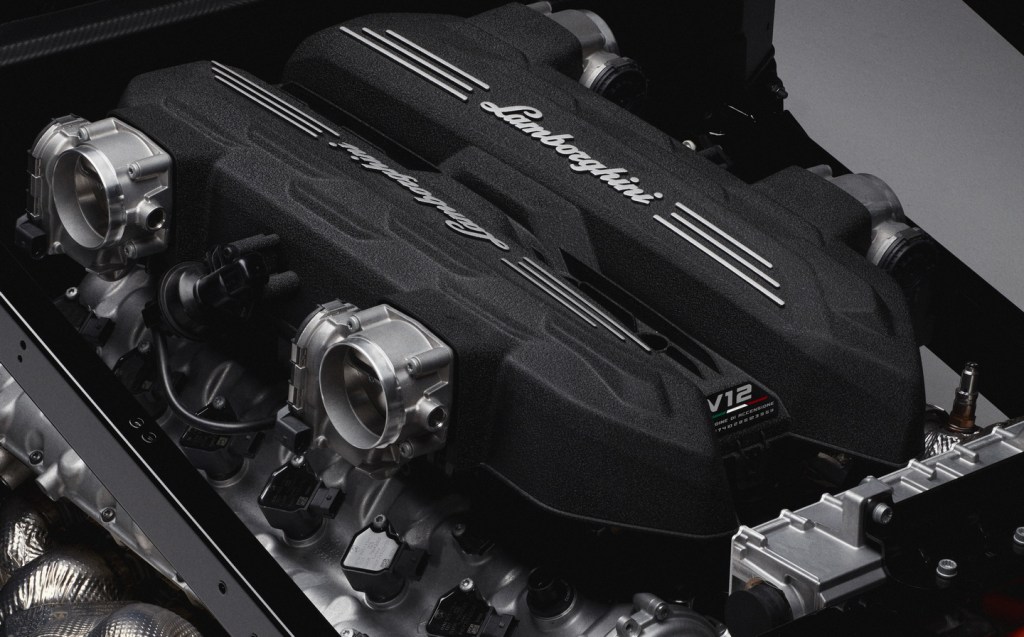
That’s where the similarities end, as Lamborghini’s engineers have gone back to the drawing board for the packaging of the new car — not to mention the pairing of the V12 with electrification.
For starters, the engine is rotated 180 degrees in comparison to its predecessors, with the gearbox bolted to the back of the engine towards the rear of the car.
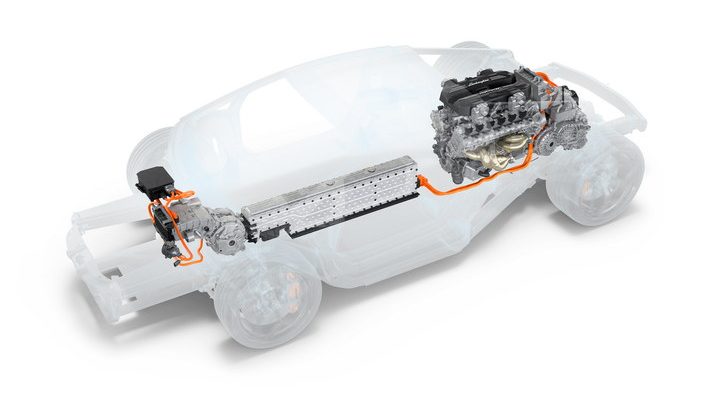
It’s no ordinary transmission either, as Lamborghini has developed a new eight-speed, dual-clutch gearbox in-house. It’s mounted transversely — instead of the traditional longitudinal layout — in the name of reducing the powertrain’s length, while one of the car’s three electric motors is integrated within its housing.
This motor cranks the engine for starting, and also acts as a generator of electricity when required, charging up the battery pack. It also can assist the engine or turn the rear wheels when the engine is switched off thanks to a sophisticated coupling method. It is rated at 147bhp.
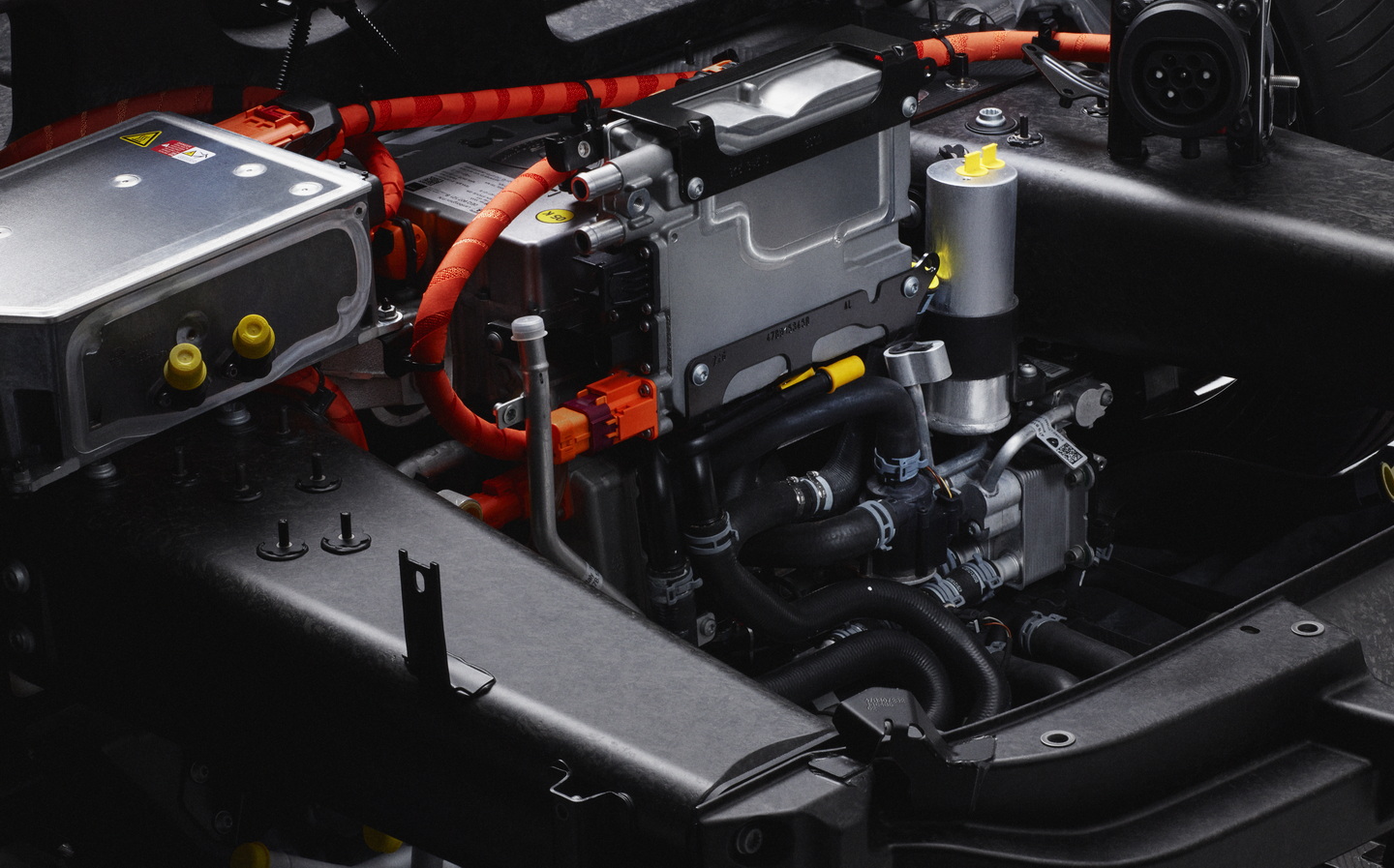
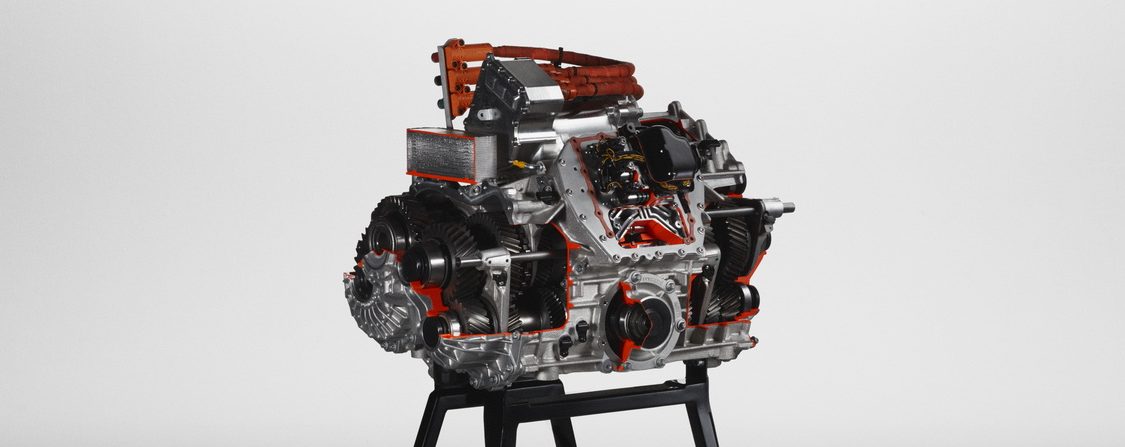
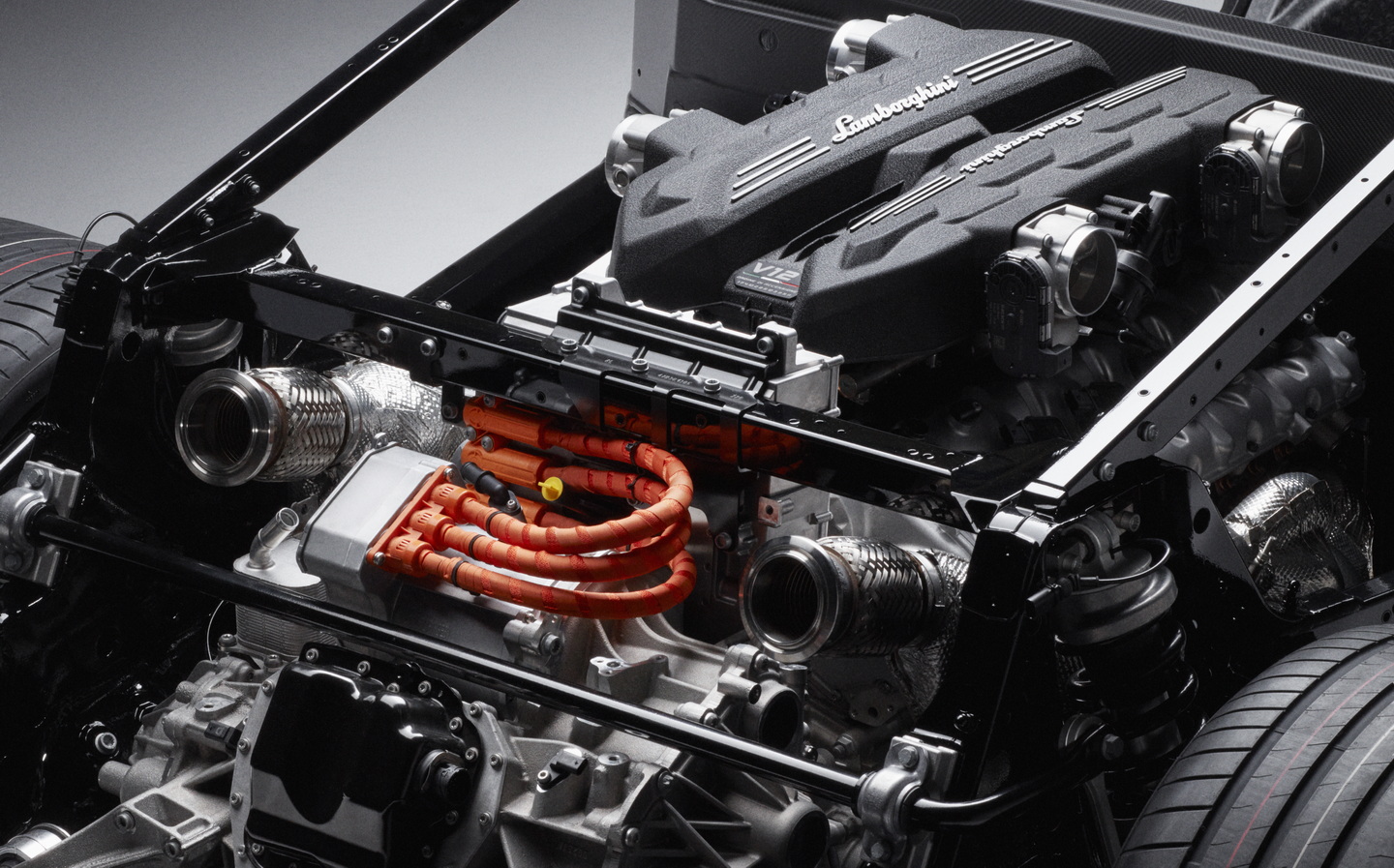
The lithium-ion battery pack sits in the space freed up in front of the engine that would normally house the transmission. Its energy capacity is a modest 3.8kWh, so long periods of driving on electric power alone will be out of the question. For reference, Hyundai Tucson PHEV’s battery pack of 13.8kWh enables an electric range of circa 35 miles.
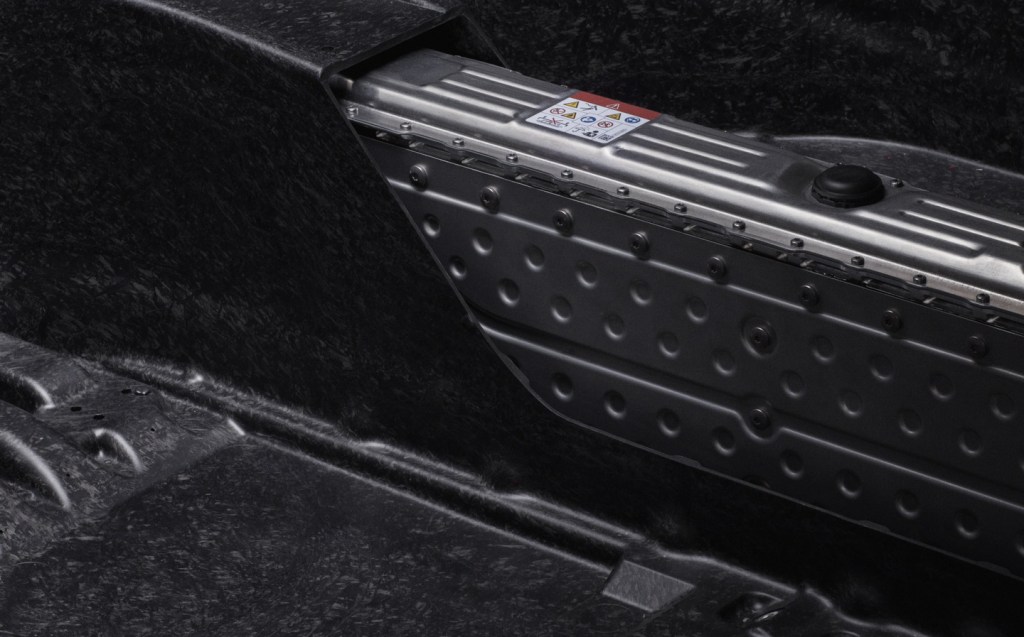
Lamborghini states that its battery can be recharged from an external source at up to 7kW, taking 30 minutes or, more likely, using the engine — via the rear motor acting as a generator — in just six minutes. Further charging is possible using regenerative braking from the front wheels.
That’s where the final pieces of the hybrid power are found, in the shape of two oil-cooled axial flux electric motors. These are each rated at 147bhp and as there’s one for each wheel, a form of torque vectoring is made possible.
When in fully-electric mode, only these motors are used by default, unless more performance or more traction is required, in which case the rear-mounted motor can turn the back wheels. In this way the new Lamborghini can use all-wheel drive in hybrid or electric guises. How the engine and motors interact will depend on which driving mode has been selected.
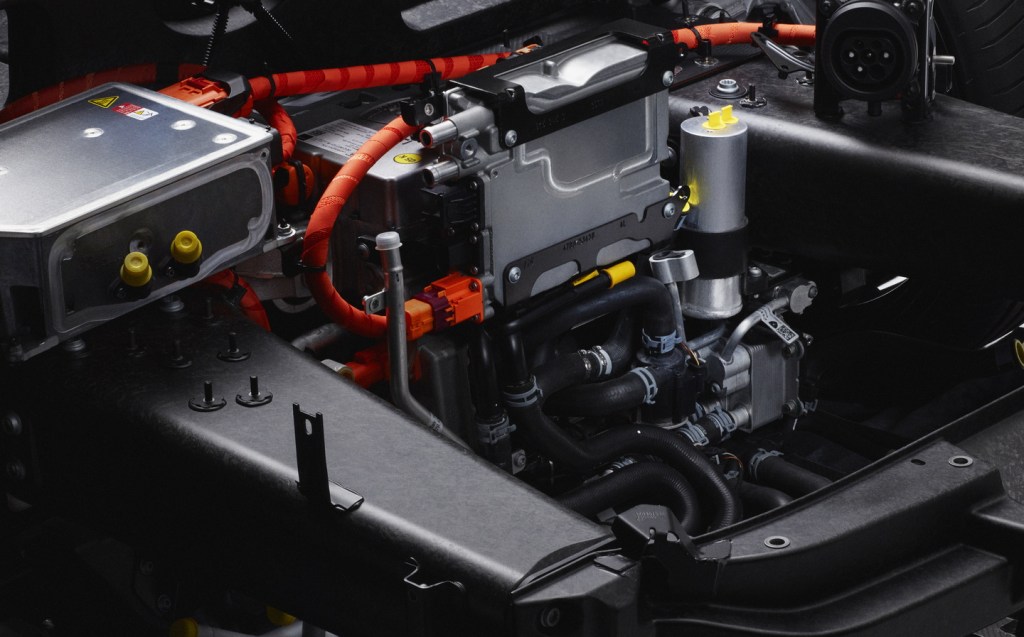
Although finally homologated figures have yet to be released for the new car, Lamborghini claims that the hybrid system allows for a 30 per cent reduction in emissions in comparison to the Aventador LP 780-4 Ultimae. That would suggest a rating in the region of 309g/km with fuel economy of 22mpg.
The LB744 will be Lamborghini’s first series production hybrid, as the Sián before it (using a 25kW electric motor and supercapacitor to store electrical energy) was made in limited numbers. All future new Lamborghinis are expected to feature electrification of some description — and the Italian firm has already revealed that it will launch a pure-electric model by 2030.
Related articles
- After reading about Lamborghini’s radical new hybrid powertrain, you might like to read what Jeremy Clarkson had to say about the new Countach
- You’ll want to read all about how Lamborghini will produce its first electric car by 2030
- It’s also worth watching the Lamborghini Huracán Sterrato show off its Rally mode on snow
Latest articles
- Lewis Hamilton wants to design a modern day Ferrari F40 with manual gearbox
- Dacia Bigster 2025 review: The ‘anti-premium’ family SUV that punches above its weight
- Your car’s worn tyres could be being burnt illegally in India, investigation reveals
- Open-top 214mph Aston Martin Vanquish Volante is world’s fastest blow-dry
- F1 2025 calendar and race reports: The new Formula One season as it happens
- Alfa Romeo Junior Ibrida 2025 review: Hybrid power adds an extra string to crossover’s bow
- Top 10 longest-range electric cars: all with over 400 miles per charge (officially)
- Renault 5 Turbo 3E ‘mini supercar’ confirmed with rear in-wheel motors producing 533bhp … and insane levels of torque
- British firm Longbow reveals ‘featherweight’ electric sports cars with 275-mile range













